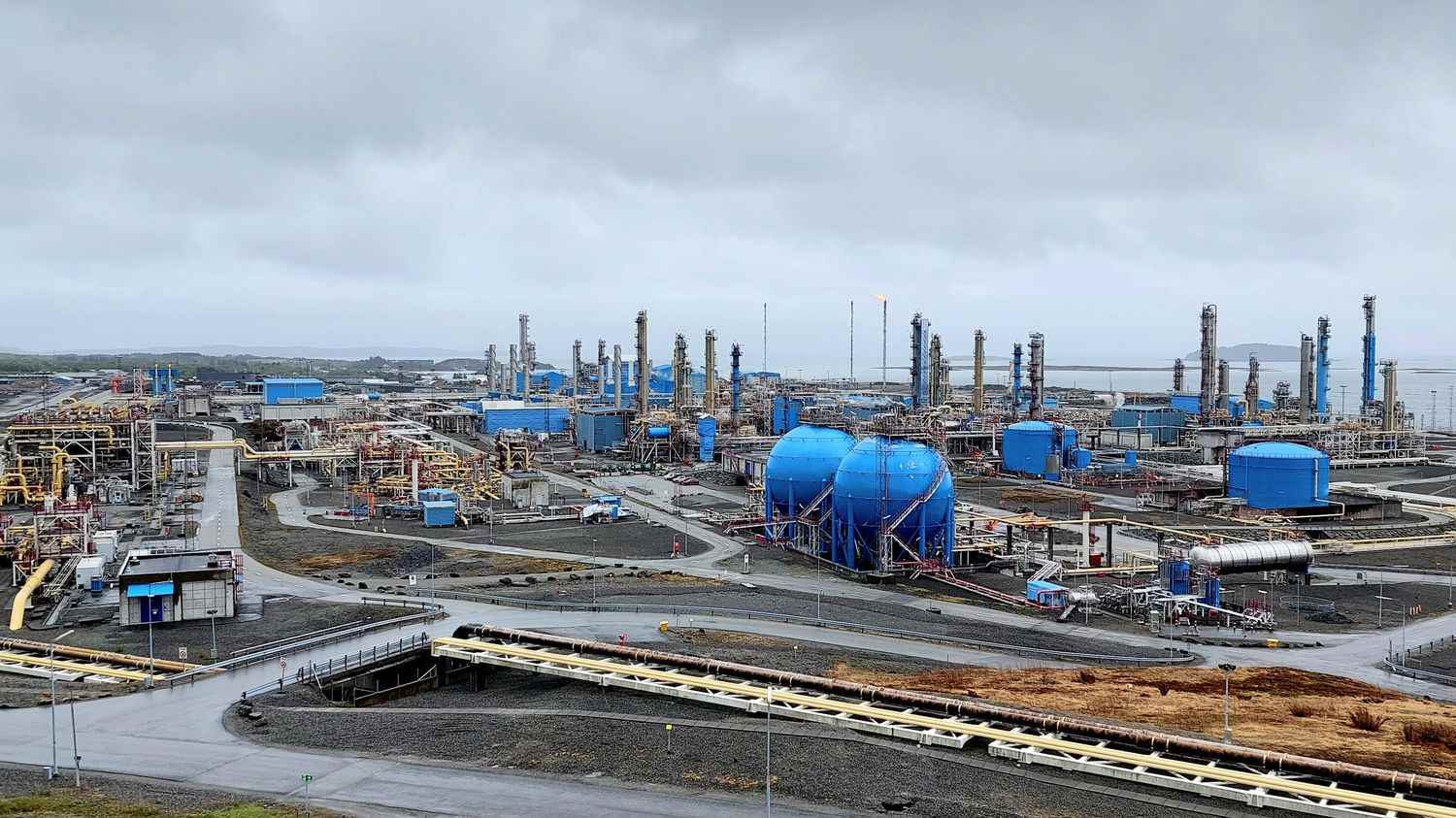It fits in the pocket. A gas detector is given to us when we arrive at Karsto to alert us in case of danger. We are north of Stavanger, in southwestern Norway, in a landscape of fjords. Arriving by ferry, several kilometers away, you can already see them: the flames of huge flares, these kinds of large chimneys that burn gas. They maintain the balance on the site. And in front of us, this impressive natural gas processing plant – a tangle of pipes, some of them monumental – which extends over 108 hectares.
>> War in Ukraine: what are the alternatives to Russian gas and oil for Europeans?
“There are more than 1,100 people working on site,” says our guide Ove Tungesvik, spokesperson for Equinor, the Norwegian company, a major supplier of natural gas for Europe. He points the finger at the gas pipelines that deliver gas directly to Europe. The liquefied gas is delivered to it by ship to the whole world. Europe, the United States, China, India, the boats go everywhere. “The site currently operates 24 hours a day, 7 days a week. And 25% of the Norwegian natural gas delivered to Europe each year passes through this plant”, explains the spokesperson.
Can Norway help reduce Europe’s dependence on Russian gas? Since the start of the war in Ukraine, the issue has become highly strategic. The Nordic country covers 20 to 25% of the gas needs of the European Union and the United Kingdom, against 40 to 45% for Russia. “Currently we deliver almost all the gas we canassures Frode Leversund, CEO of the operator Gassco, the national company in charge of Norwegian gas infrastructure. We have optimized the maintenance program on the Norwegian continental shelf to ensure that we can deliver as much gas as possible. Going back to 2017, we produced our highest volume that year, 117 billion cubic meters. Last year we delivered just over 113 billion cubic meters. I’m sure we can get back to the 117 billion figure. Maybe even a little more.”
“This war is terrible for all of us and we will do what we can to be a safe, reliable and predictable supplier to Europe in this period, but also for years to come.”
Frode Leversund, CEO of Gasscoat franceinfo
A relationship of trust with its European partners and the promise of mobilization at all times on the Norwegian side, but Oslo does not claim to replace Russia in the supply of gas to the European Union. However, the EU’s objective is to do without Russian gas entirely before 2030. To facilitate deliveries a little more, a new gas pipeline between Norway and Poland is due to open in the autumn.
